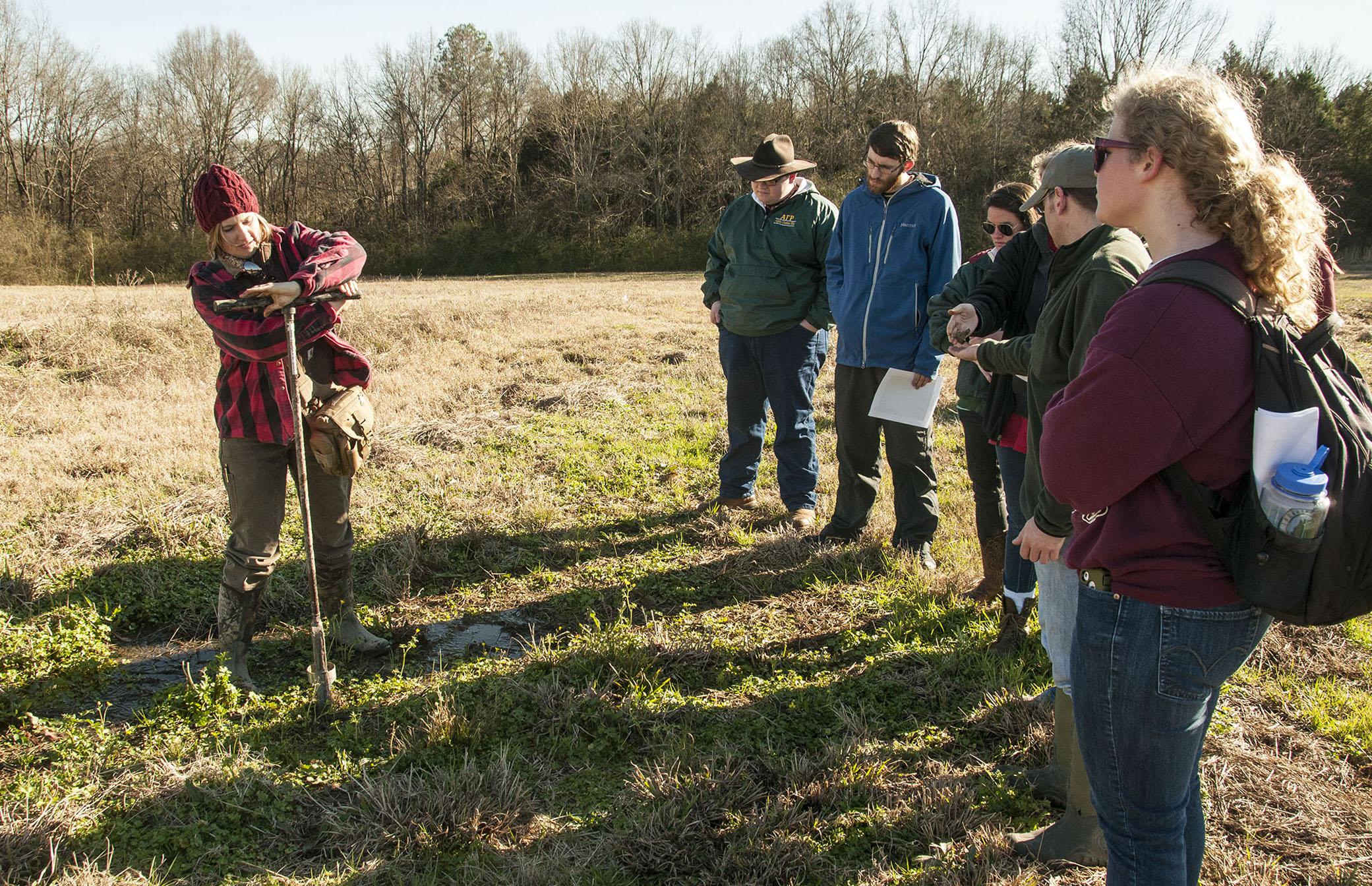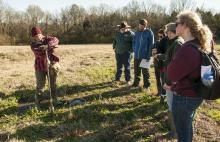Information Possibly Outdated
The information presented on this page was originally released on February 7, 2013. It may not be outdated, but please search our site for more current information. If you plan to quote or reference this information in a publication, please check with the Extension specialist or author before proceeding.
MSU establishes farm for students
MISSISSIPPI STATE – Some Mississippi State University students may be able to eat their own homework as they transform a hayfield into a student farm.
MSU’s newly established student farm is located on about 24 acres of the H. H. Leveck Animal Research Center, commonly called South Farm. The student farm is a project guided by the Mississippi Agricultural and Forestry Experiment Station, MSU’s Department of Plant and Soil Sciences, and MSU’s Department of Landscape Architecture.
“Over the past few months, we’ve met with a steering committee of students, faculty and staff to brainstorm the founding principles for the farm, to develop a mission statement and to envision the possible uses for this unique piece of land,” said Billy Kingery, a MAFES soil scientist and professor and an advisor for the student farm.
Kingery and Joe Massey, also a MAFES scientist and professor, put together a new course to get the farm up and running: Hands-on Design and Food Production Practices for Small Farm Sustainability.
“We have students in this course ranging from freshmen to seniors, and from a variety of majors, including geoscience, architecture, forestry, agribusiness, agronomy, horticulture, landscape architecture and animal and dairy science,” Kingery said. “There is a critical and widely acknowledged need for new, young farmers to replace an aging farm population and a significant interest in local, sustainable agriculture.”
The inaugural small-scale farming class is structured to provide students with hands-on experience designing and implementing farming practices, growing food, living in harmony with the earth, and conserving natural resources.
The farm’s master plan includes high tunnels and production fields, an outdoor classroom, beehives, composting areas, restored prairie and more to be developed over time.
“The farm will be a place for student-led activities, for addressing 21st-century issues, and for experimenting with design and land use that enhances local ecosystems,” Massey said.
Project participants will also care for the riparian buffer along the edge of Turkey Creek.
“We want to maintain the stream bank areas to prevent erosion and encourage habitat for pollinators and other wildlife,” he said.
By the end of January, students had planted a variety of seeds to develop their first high tunnel crops. They take turns watering and caring for the seedlings.
“They selected peppers and Swiss chard to start with and later will add tomatoes, lettuce, squash, zinnias and sunflowers,” Kingery said. “A few students brought in some other seeds they wanted to try on their own -- jalapenos, basil and cilantro. Eventually, students hope to divide their harvest in three ways: produce to eat, to sell and to donate to charity.”
Kingery and Massey plan to take the students on field trips to give them a firsthand look at local food production.
They have also lined up an extensive list of speakers from the Extension Service, MAFES, the National Resources Conservation Service and Mississippi Solar.
Each presenter’s topic ties in with important farm elements: soil, water, energy and production. All of the educational sessions will lead up to a Spring Break work week.
Dallas O’Bryant, a senior from West Point studying agribusiness, took the class to learn strategies to help his existing business.
“I grow produce on about 10 acres of family land and sell at the different local farmers’ markets,” O’Bryant said. “I don’t have a high tunnel, so this course will help me figure out if it’s an investment I want to make.”
O’Bryant said MSU needs an on-campus farmers’ market for the students to have close access to fresh fruits and vegetables.
“I think having a farm here that can sell produce to students and teach students more about where their food comes from is something that’s been needed for a while,” he said. “It’s exciting to be part of getting the student farm started.”




